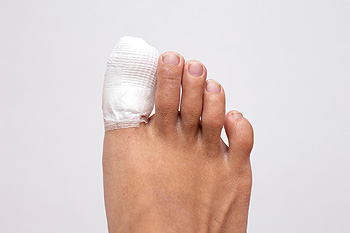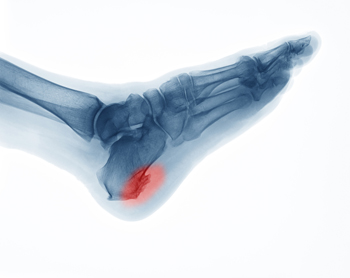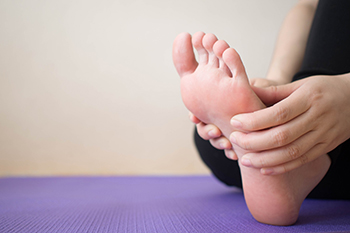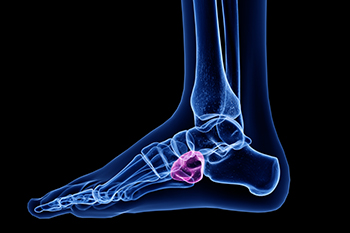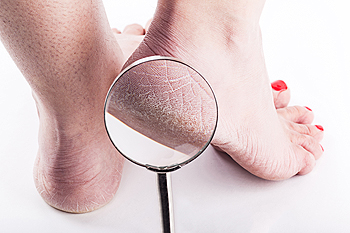
Cracked heels can result from increased pressure on the feet caused by excess weight or standing too long. Under such pressure, the fat pad under the heel tries to expand, and with dried skin or from wearing open-heeled shoes, there is no support to shore up the expansion so the skin around the heels starts to crack. Sometimes, dry or cracked heels can occur from an underlying medical condition, like diabetes or hypothyroidism, both of which reduce sweating and create more dryness. This unsightly condition can start out as small cracks on thickened, dry skin, and calluses may form over the cracks. This can develop into deeper cracks and can even bleed, and it can hurt to walk. Once this happens, the possibility of infection increases. If you suffer from cracked heels, you can try to moisturize your feet more often to see if it helps, but due to the possibility of this getting out of hand and leading to further complications, it is suggested that you make an appointment with a podiatrist who can examine your heels and recommend the best treatment for you.
If the skin on your feet starts to crack, you may want to see a podiatrist to find treatment. If you have any concerns, contact one of our podiatrists from Foot and Ankle Clinics, PA. Our doctors can provide the care you need to keep you pain-free and on your feet.
Cracked Heels
It is important to moisturize your cracked heels in order to prevent pain, bleeding, and infection. The reason cracked heels form is because the skin on the foot is too dry to support the immense pressure placed on them. When the foot expands, the dry skin on the foot begins to split.
Ways to Help Heal Them
- Invest in a good foot cream
- Try Using Petroleum Jelly
- Ease up on Soaps
- Drink Plenty of Water
Ways to Prevent Cracked Heels
- Moisturize After Showering
- Skip a Shower
- Keep Shower Water Lukewarm
- Don’t Scrub Your Feet
If you are unsure how to proceed in treating cracked heels, seek guidance from a podiatrist. Your doctor will help you with any questions or information you may need.
If you have any questions, please feel free to contact our offices located in Woodbury, West St. Paul, and Edina, MN . We offer the newest diagnostic and treatment technologies for all your foot care needs.
